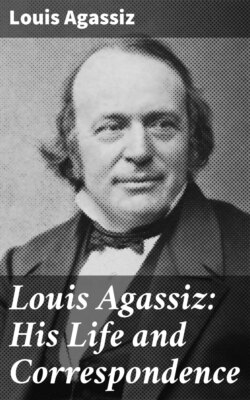Читать книгу Louis Agassiz: His Life and Correspondence - Louis Agassiz - Страница 39
На сайте Литреса книга снята с продажи.
BRAUN TO AGASSIZ.
ОглавлениеCARLSRUHE, Whitsuntide, Monday, 1827.
. . .I am in Carlsruhe, and as the package has not gone yet, I add a note. I have been analyzing and comparing all sorts of plants in our garden to-day, and I wish you had been with me. On my last sheet I send some nuts for you to pick, some wholly, some half, others not at all, cracked. Schimper is lost in the great impenetrable world of suns, with their planets, moons, and comets; he soars even into the region of the double stars, the milky way, and the nebulae.
On a loose sheet come the "nuts to pick." It contains a long list of mooted questions, a few of which are given here to show the exchange of thought between Agassiz and his friend, the one propounding zoological, the other botanical, puzzles. Although most of the problems were solved long ago, it is not uninteresting to follow these young minds in their search after the laws of structure and growth, dimly perceived at first, but becoming gradually clearer as they go on. The very first questions hint at the law of Phyllotaxis, then wholly unknown, though now it makes a part of the most elementary instruction in botany.* (* Botany owes to Alexander Braun and Karl Schimper the discovery of this law, by which leaves, however crowded, are so arranged around the stem as to divide the space with mathematical precision, thus giving to each leaf its fair share of room for growth.)
"1. Where is the first diverging point of the stems and roots in plants, that is to say, the first geniculum?
"2. How do you explain the origin of those leaves on the stem which, not arising from distinct geniculi, are placed spirally or scattered around the stem?
"3. Why do some plants, especially trees (contrary to the ordinary course of development in plants), blossom before they have put forth leaves? (Elm-trees, willow-trees, and fruit-trees.)
"4. In what succession does the development of the organs of the flower take place?—and their formation in the bud? (Compare Campanula, Papaver.)
"5. What are the leaves of the Spergula?
"6. What are the tufted leaves of various pine-trees? (Pinus sylvestris, Strobus, Larix, etc.). . .
"8. What is individuality in plants?"
The next letter contains Agassiz's answer to Dr. Leuckart's questions concerning the eggs he had sent him, and some farther account of his own observations upon them.
